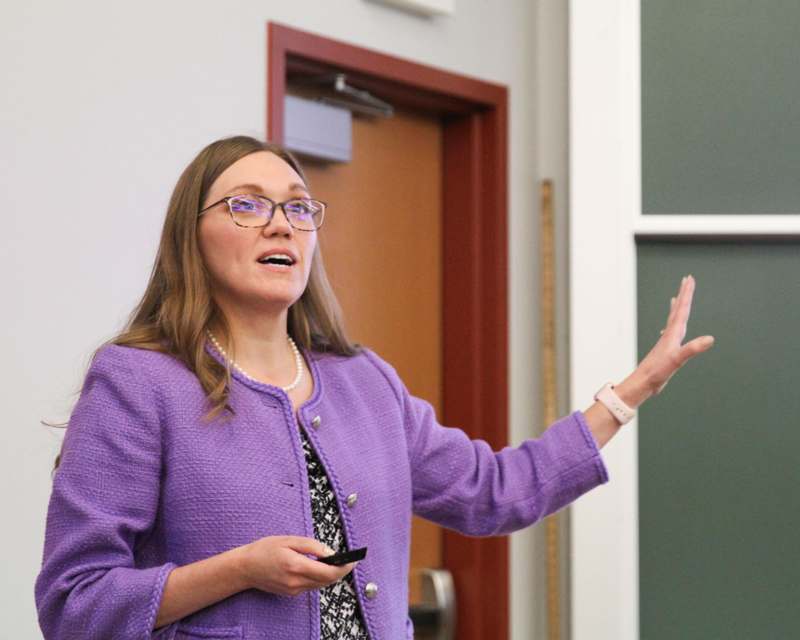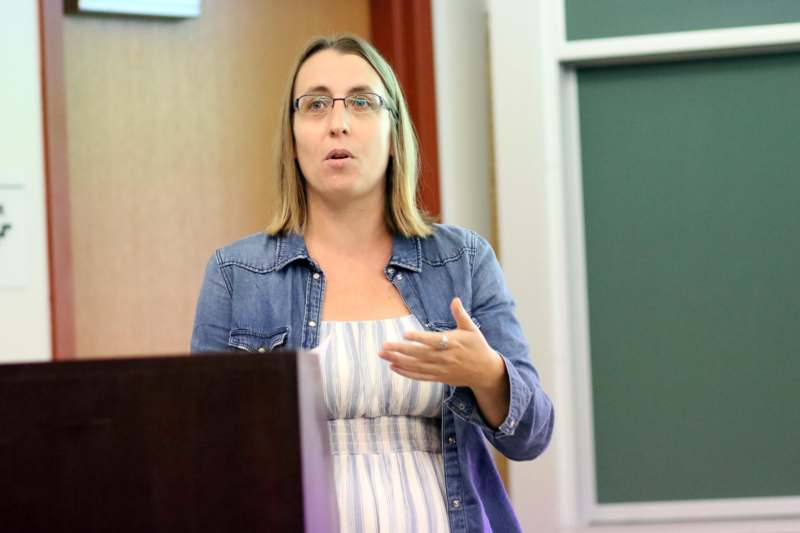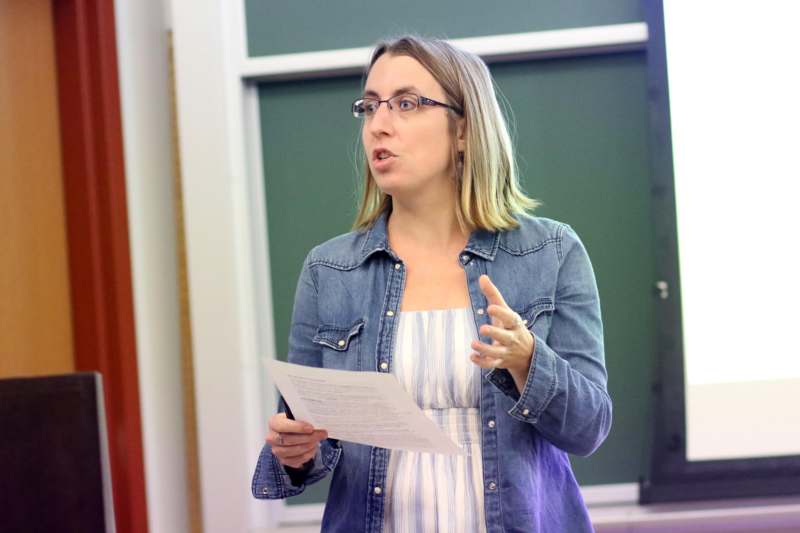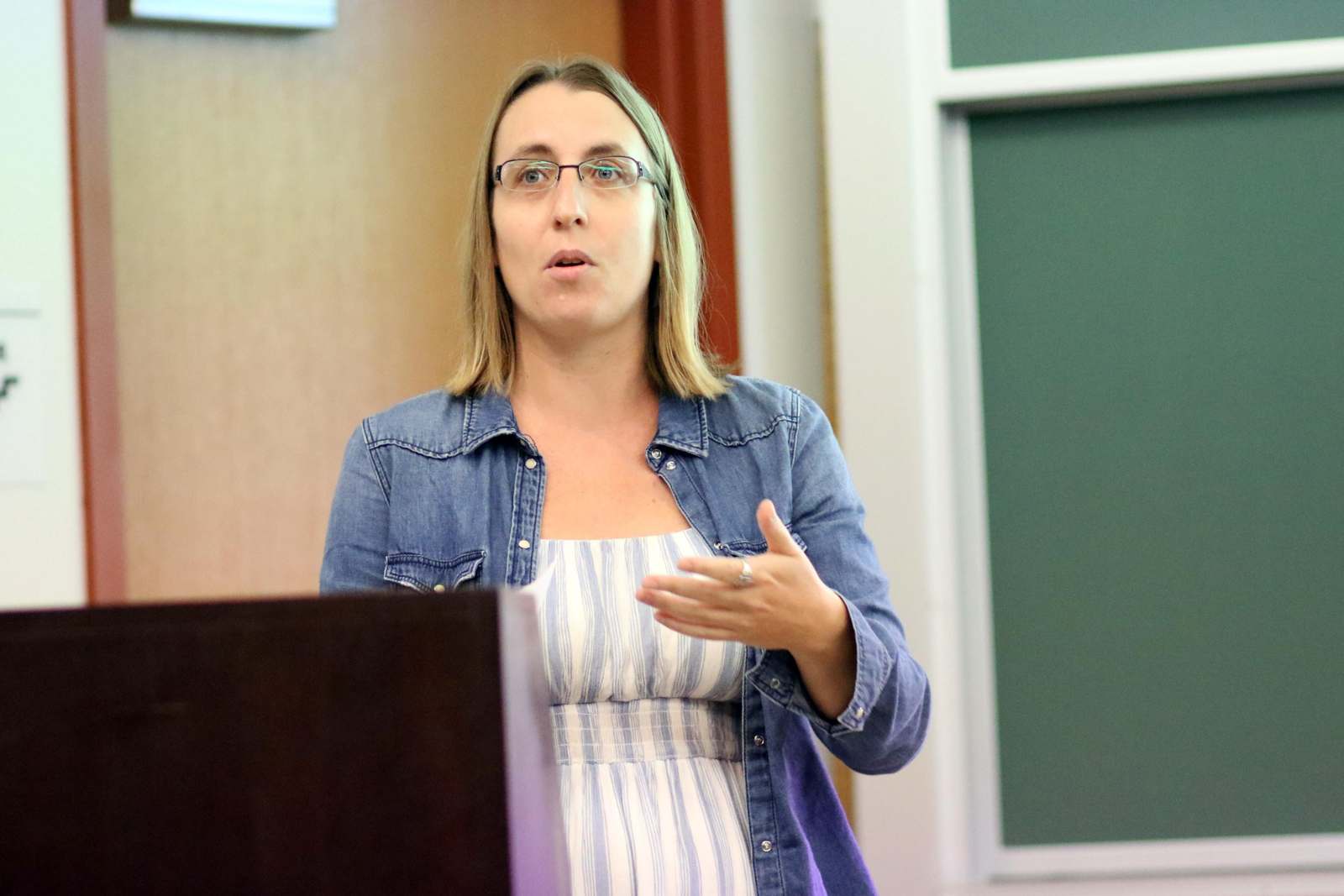Ides of August

Associate Professor of Rhetoric Sara A. Mehltretter Drury presented about her summer project working with Campus Compact and the Arthur Vining Davis Foundation to took at civil discourse on campus and create guidance and resources for higher education institutions to better engage with civic issues such as war, race and anti-racism, campus issues, college governance, and other divisive topics.

She says that paper snowflakes work because of symmetry. You cut holes in a folded piece of paper, and then unfold to view the snowflake-like design you have created. Here, instead of creating snowflakes, we would like to count how many holes they have. Can we make that task easier by counting while the snowflake is in its folded state?

Mathematically, this is precisely the approach recently taken for counting the "holes" of symmetric sets. An algorithm by Basu and Riener leverages one specific type of symmetry to accomplish the task in far fewer steps than the best known algorithms without symmetry. Now, we would like to see if this algorithm still works in the next major class of symmetry [this talk reflects joint work with Dr. Saugata Basu].

Her presentation focused on the necessity to provide students of French, particularly at the elementary level, with activities that target the intercultural competence by using simple and accessible, yet authentic documents, which reflect the plurality and diversity of French-speaking countries and regions.

Considering the challenges of teaching load, reduced class time, and fabricated content in elementary-level commercial textbooks, she presented here a project that started as a graduate student: designing activities to teach about basic topics (family, school, daily environment) using comic books from different Francophone areas. By showing a sample activity based on an Ivorian comic book, I want to emphasize that it is possible to easily integrate a diversity of perspectives in the Elementary French classroom, thanks to open access resources that can complement or enrich the content of a classic textbook.

According to Lindsaty, both students and faculty are much more aware of open textbooks than they were three years ago. Additionally, while faculty continue to consider cost when selecting course materials (among other factors), students are much more aware of this effort than they were in 2021 (3.57 vs 2.82 on a 4-point Likert scale with 4 meaning "strongly agree"). Students also rated the College’s attention towards textbook costs higher (3.47 vs 2.28 on a 4-point Likert scale).

She also shared ongoing opportunities for faculty to receive stipends for reviews and course (re)design grants. Support for the survey and these stipends is provided by PALSave, the affordable learning initiative of PALNI, the Private Academic Libraries Network of Indiana. PALSave soon will offer grants for engaging with open pedagogy.

Molecular switches are molecules that can take two distinct states and have applications in molecular transistors, light activated catalysts, and drug delivery. Electron donor acceptor (EDA) complexes are comprised of two molecules, one with a partial positive charge and one with a partial negative charge.

According to Scanlonh, our experimental collaborator has synthesized the electron donor and electron acceptor molecules tethered together by chemical bonds. These act at molecular switches with the “closed” state when the EDA complex is formed and an “open” state when they are separate. Computational chemistry was used to determine that the closed state is energetically favored over the open state.

Scanlon also investigated how long the tether needed to be to not allow the EDA complex to form. The charge transfer was quantified in both the ground and excited state and it was found that almost a full electron was transferred in the excited state. Lastly, we found that wavelength of light to needed reach the excited state is 50-100 nanometers larger in the closed state versus the open state.

Professor of Chemistry Walter Novak and Associate Professor of Biology Erika Sorensen-Kamakian presented "Experimenting with Opportunity: Best Practices for Increasing Student Success in a Diverse Student Body." They used mentor-mentee contracts, individual development plans, and collaborative agreements to foster a welcoming atmosphere in their combined labs.

Professor of Chemistry Walter Novak and Associate Professor of Biology Erika Sorensen-Kamakian presented "Experimenting with Opportunity: Best Practices for Increasing Student Success in a Diverse Student Body." They used mentor-mentee contracts, individual development plans, and collaborative agreements to foster a welcoming atmosphere in their combined labs.

Scenic Designer & Technical Director David Vogel presented on his experience at a 2-week, intensive puppet program in Prague, Czechia. Vogel spoke of the many cultural differences between his home country (the United States) and the Czech Republic. Most notabley, Vogel highlighted the importance of puppet culture within the everyday life of Czechia.



















































































































